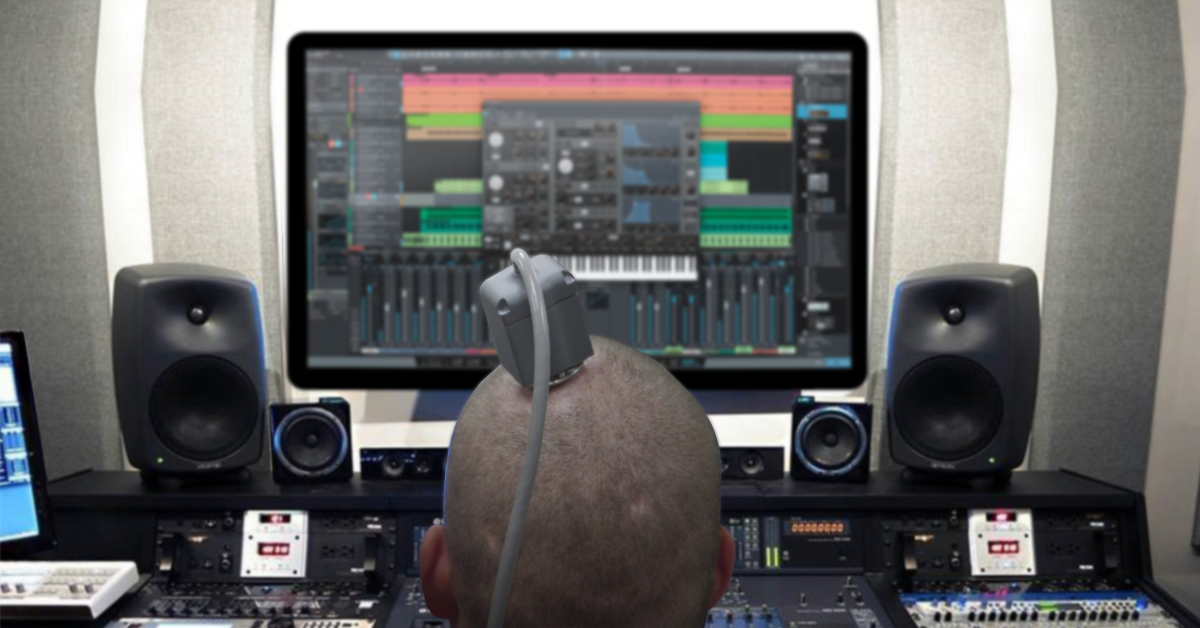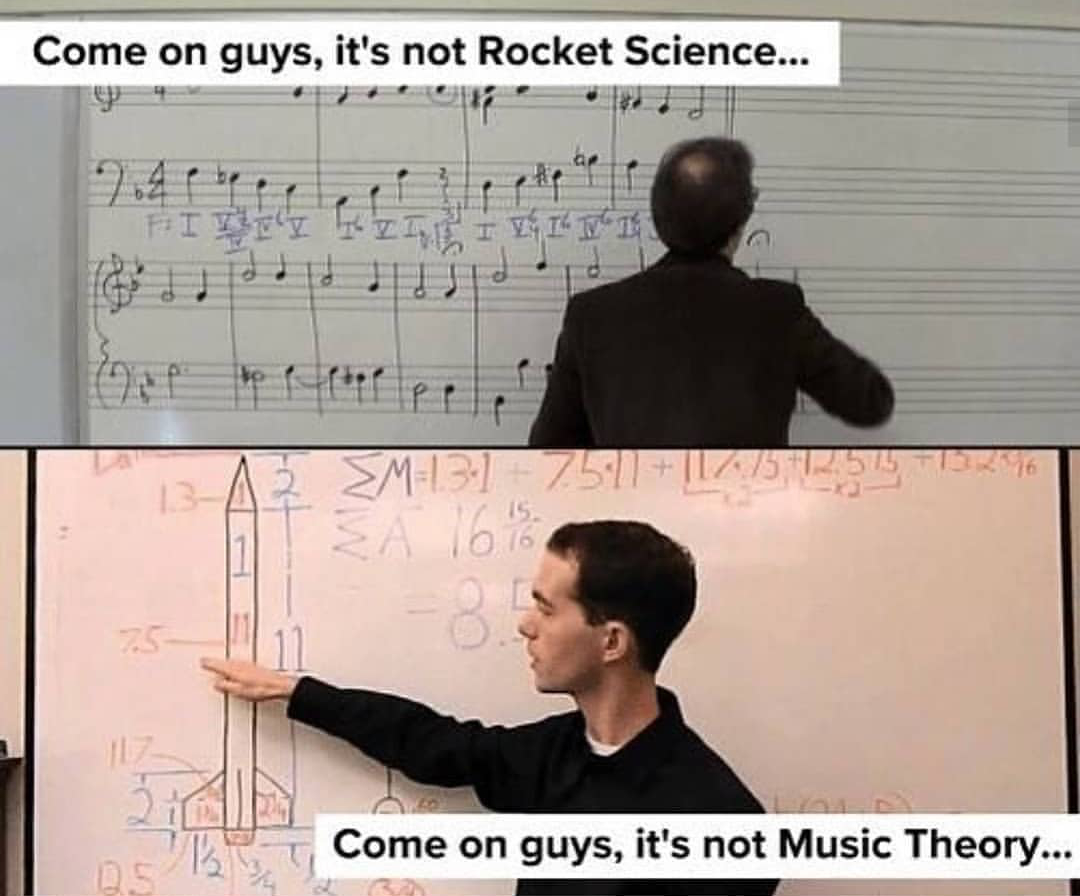
Music patterns upload 'direct-to-brain', circa 2038?
“Music Patterns installed into your head?”
Why not? Beethoven's head was full of Music-Patterns. In fact, the heads of all of the greatest musicians are filled with them.
“Knowing a lot of patterns is key to writing great music,” says an eminent musicologist “and that's what we're working on now: how to get them in there.”
EVEN the best composer needs patterns in his head.
They can come to you in many different ways. But they usually 'pop' into your head as a musical-pattern.
What if they don't 'pop' into your head as often as you'd like?
Or what 'pops-in' just isn't good enough?
Musicians have been trying to answer those questions for hundreds of years and we're about to solve them...
Up until now, there were only three ways:
- Trial and Error
- Memorize Music Theory
- Steal Patterns from Other Artists
If you're unfamiliar with these methods I'll briefly explain.
Trial and Error
When something isn't coming (or isn't good enough) a composer will sometimes use the 'Trial and Error' method and it goes like this:
“What's coming from my head isn't good enough so I'll randomly play notes until I find something I like.”
After trying this method for a while (sometimes years) a composer finds out that it rarely works. Why?
Because 99 times out of a 100 the result sounds like . . . well, a bunch of random notes! That's why random note generators don't work either.
In order to fix this problem, they mix random notes with what's in their head, and that works a little better, but it still relies on 'luck'. They're trying to 'get lucky', but working musicians don't have time for that, they make their own luck (and are way more successful without wasting time) as you'll see.
A lot of beginners also use the 'Trial and Error' method because they want to "create something original", and they do, but it sounds like crap.
This is the method amateurs use.
Memorize Music Theory
After finding out the 'Trial and Error' method doesn't work, most musicians quit. They end up saying something like:
“I just don't have talent for music. Nothing comes to mind, and when it does, it sucks.”
So they don't want to create music anymore, and I can't blame them, even an experienced composer goes through 'dry spells' and it sucks! On more than one occasion I've found myself thinking, “On nooooh, my Mojo's gone!”
How do advanced musicians solve this problem?
They learn Music Theory.
How? They go to school, take lessons, watch videos, purchase books, online courses, and read, read, read. Then they have to memorize a bunch or arcane symbols and terminology.
Because, the thing about music theory is, if you don't memorize it, it won't 'pop' into your head when you need it. Actually, you have to memorize music theory or it won't work.
Even going to school is hard. They FORCE you to memorize everything using DRILLS - they "drill" it into your head!
I remember theory class at UNM very well...
The first rule they gave us was: NO PARALLEL FIFTHS
I was horrified! I loved parallel 5ths! That's almost all I ever played! It's one of the reasons I picked up the guitar in the first place!

The fact is, music theory works.
But it's hard.
There's sooo much to learn, it can take a lifetime, and harmony can take even longer than that.
This is the method advanced musicians use.
Steal Patterns from Other Artists
In this method you spend thousands of hours learning every song you can get your hands on. You practice the 'licks', the chords, the rhythms, the solos, over and over again until they become natural.
Then, when it comes time to play something original, what comes out is the stuff you "borrowed" with a few notes changed around (to make it 'yours').
That's works great, but what if you don't play an instrument? Maybe you're just a composer, arranger, or songwriter?
In that case you do the same thing. You practice copying other people's music. You recreate it, as close as you can, in your music workstation.
This is really effective, the only problem is:
Everyone starts sounding the same.
That's why it takes 10, 20, 30 years for original music to be made, because everybody’s copying each other all the time. So you get the same sounding music for 10 or more years - it rarely changes!
But it works.
That's why all of the greatest bands like Led Zeppelin and The Beatles ripped-off the material for their songs. They just stole it from other musicians.



And they're not the only ones. . .
They all do it!
I could list page after page of rip-offs.
After a while, you have to ask yourself . . . does anybody write original music?
Does it even matter?
I guess not, because this is the method professionals use.
But what if there was another way?
A way, like the professionals, takes a fraction of the time and gets results, without stealing from other artists?
Well that's what I've been working on for the past 35 years.
With the help of computers, I've gotten closer than ever to the 'holy grail':
Getting music-patterns "in your head" fast, without "trial-and-error", without "music-theory", and without "stealing from other artists".
It's called Prosonic Patterns and it's now the largest musical-patterns library in the world.
Imagine being able to hear new musical ideas and drop them into your DAW. Well that's exactly what you can do with Prosonic Patterns.
This library allows you to browse
music patterns,
drum patterns,
arpeggios, and
chord progressions
all within a couple of minutes, then you can use them in your own music right away! And the Midi Browser let's you audition them super fast.
The patterns in this library are no joke either!
They're all professional music-patterns of the highest quality.
Now, I hear lot of people say, "But using a computer is cheating! You should just learn music theory, like I did!" or, "If you don't know music theory you shouldn't be writing music in the first place!"
Is this really true?
No. It's complete fallacy from beginning-to-end and here's why.
Let's start with the obvious, "If you don't know music theory you shouldn't be writing music in the first place!"
There are so many great musicians that don't know music theory it's hard to know if the person saying this is being serious or if they're just being arrogant. They're basically saying:
"Only people who do it my way should be able to create music!"
Not only is that an elitist/arrogant thing to say but it's just not true. Jimi Hendrix didn't know music theory - he just practiced guitar 8 hours a day for over 15 years.
Which leads me to the next thing I hear all the time, "If you don't play an instrument you shouldn't be creating music at all!"
But what if your instrument is a computer?
Who's to say what I can, and cannot, use as an instrument? Maybe my instrument is a cardboard box? It's none of their business! And if they don't like it they can move on, change the channel, listen to something else!
So they disapprove of my instrument. I don't care. I love creating music with my computer! Look, the fact is: I wasn't put here for your approval and you weren't put here for mine. Great art was never made because people approved of it or not.
Only the EGO cares about how you make music. Does it really matter how you create it? Or is the end result what really counts? At the end of the day the only question I have is:
Is the music great?
If not, then the next question is: What kind of tools can you use to make it better?
If you're a master visual artist, does that mean you can't use Photoshop or premade templates to speed up your workflow?
Maybe you feel like making a collage, or a stylized collection like Andy Worhol?

Andy Warhol's "Marilyn" which sold for over $2.3MILLION in March 2018, Sothebys London
If you want to learn music theory and do it all from scratch, that's fine, I love doing that! I wrote my album INTERGALACTIC HIGHWAY from scratch (scored it directly and recorded my guitar, bass, key, and drum performances).
But, on some of the tracks I used Prosonic Patterns. For example I used drum patterns on Section 'A' of SPACEWALK. I used drum patterns for the Interlude of THE CRYSTILLIAN WARS. I also used a chord progression for the Intro of DOMINIE NOIR.
I love music theory too! I went to university, studied music theory intensely for over 35 years and I use Prosonic Patterns all the time (usually for practicing my chordal rhythms and for our Friday night jam sessions - just randomly pick a beat and a progression and improvise over it, super fun!)
For most people, music theory (and practicing the same thing over and over again) is boring. For other people, they don't want to rip-off other musicians just so they can eventually create their own original music.
Prosonic Patterns are not here to replace music theory, or trial-and-error practice, they're just a tool (like everything else on the computer) - they quickly give you the result of Music Theory without all the time and expense that it takes to memorize it.
I dedicated my life to making these patterns, not only for myself but for you too. You can think of me as your "session musician", your "silent writing partner", or your "ghost collaborator". Because, really, what's the difference between hiring a session musician (to come in and give you new ideas) or hiring me over the internet?
The biggest difference is the cost!
Just the recording time alone will cost hundreds of dollars and that doesn't even include the studio fees! Time is money and your time is valuable.
The only way to really know, for sure, is to download a few and see if they spark new ideas in your head. They certainly do for me, and maybe, just maybe, they'll inspire you to create a masterpiece!
You'll never know unless you try...
Here are the links:
Maybe one day we'll be able to install music-patterns directly into our heads, until then, this is the next best thing.
- Tony